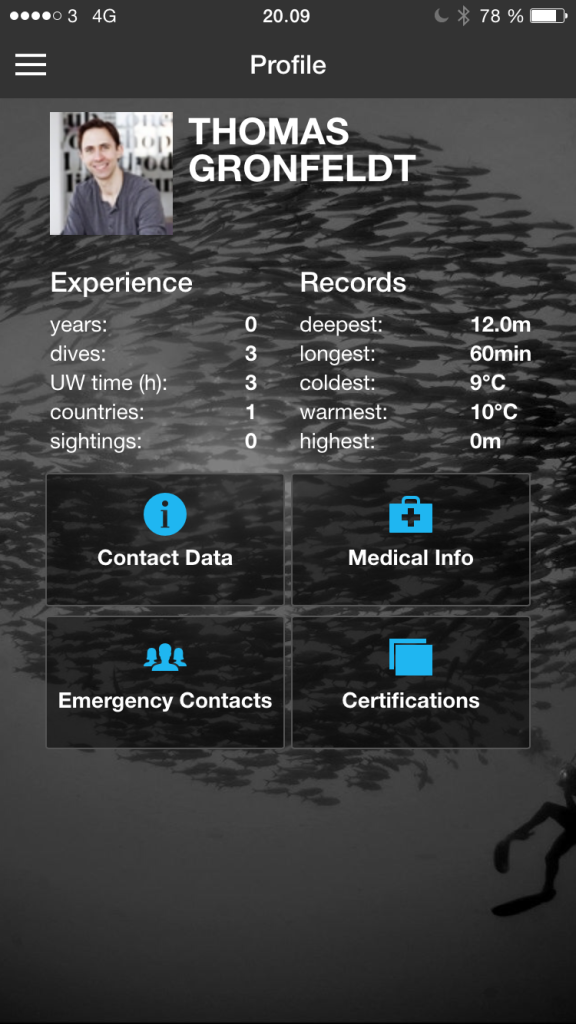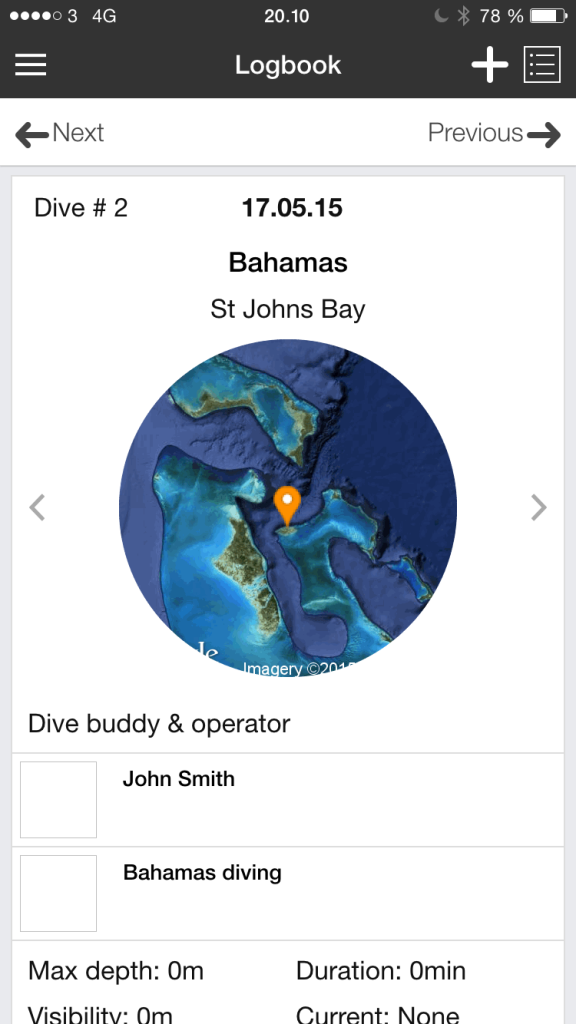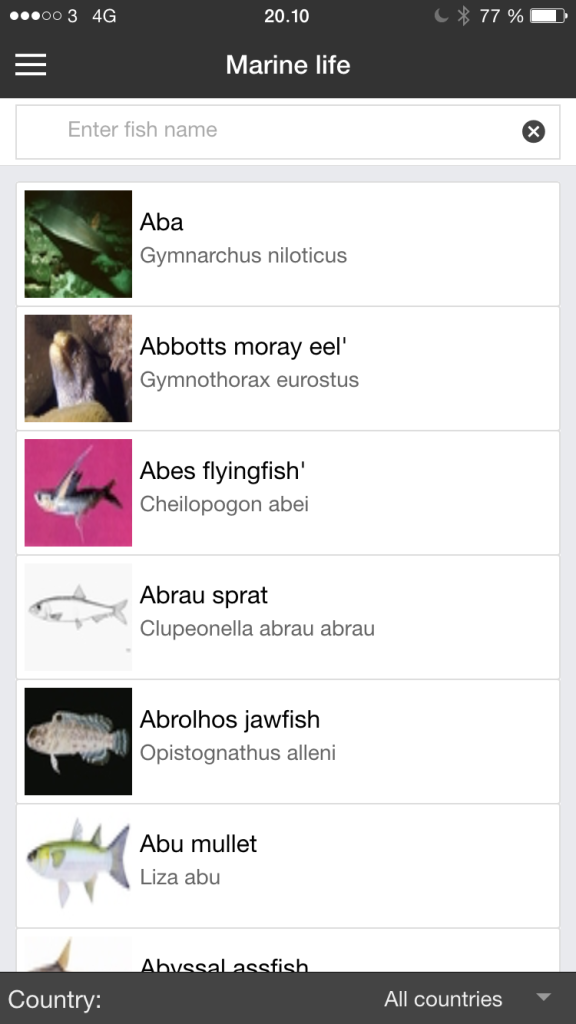In addition to the browser version of Diviac and the desktop dive-computer interface, Diviac features smartphone apps for both iPhone and Android, allowing you to log your dives on the go and access your dive history and other info anywhere.
Whereas other dive-log apps I’ve tried have sought to be entirely, or at least primarily, mobile apps, Diviac’s mobile apps feel very much like an input method into a system, rather than a stand-alone app. Features from the browser version aren’t available, allowing the key feature, dive logging, to stand out and give you a much cleaner interface.
The home screen
The app’s home screen is primarily black and white, giving off a professional impression. The only color elements are the user profile photo and the icons for contact data, medical info, emergency contacts and certifications, which are in blue. The page gives you access to these four areas, as well as a quick-view summary of your dive experience, including years diving, number of dives, countries dived in, deepest dive, etc.
A sidebar menu gives you access to the rest of the app. Of input options, you can add a new dive and a new dive site. You can also access your newsfeed, logbook, photos, friends, marine life, dive sites and dive centers.
Logging A Dive
When you log a new dive, you’re prompted to copy your last dive (useful for repeat dives in the same location), use a pre-defined template (these need to be made in the browser version), or start from scratch. The app uses your phone’s GPS (if you’ve granted access) to identify both your location and the dive site. If the dive exists in the dive-site database, you have the option of auto completing the entry, including GPS coordinates, or if it doesn’t exist, you can add a new location with current coordinates. One of the features the app lacked that’s available in the browser is a map to help fine-tune your location. Say you’re doing a boat dive a bit off shore and you’re logging back on land. It’s quite useful to use the GPS to find the more-or-less correct position, and then to use a map to pinpoint the dive site’s exact location. This can of course be done in the browser when you get home, but it adds another step to your logging workflow.
You can also add buddy/guide/instructor information, tag for dive type, log air and water temperature — although not any other weather details, which can oddly only be done in the browser version — wave and current info, visibility, equipment used (distinguishing between personal and rental gear), and add marine life sightings and photos.
Marine life database
The marine life database is also available on the mobile app; you can even download a country’s database for offline use, which is extremely useful if you’re traveling and don’t have access to cellular data. With 14,000 entries, most sightings should be covered, and can be saved directly in your dive-log entry. If you transfer dive photos from your underwater camera to your phone, you can also add photos from the dive to the entry.
Things I missed
A few things that I’d like to see added to the mobile app from the browser version are the option of placing your dive site on a map (as mentioned) and the option of adding student info for training dives. The function where you can share a dive with your buddy when you ask him or her to validate it is great, but it would be useful if you could “push” it to divers who do not validate your dives. As an instructor, you’d be able to share the training dives’ info directly to your students’ devices, rather than tell them or write it up on a white board. But these are fairly minute complaints in an otherwise very well designed mobile-logging app.




